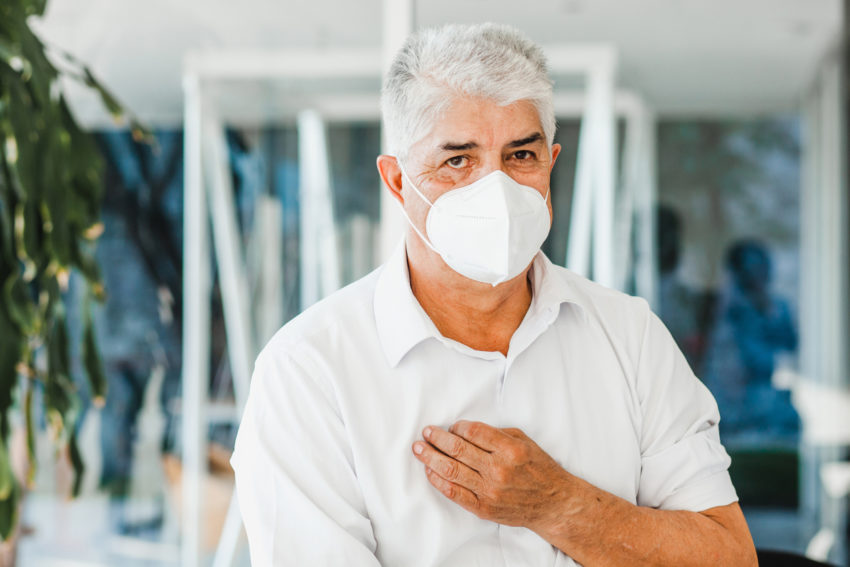
Share On Social!
In the U.S., Latinos are uninsured nearly three times more than their white peers.
Given that Latinos are projected to grow to 25% of the population by 2045, this lack of healthcare coverage will continue to endanger the health of many more individuals, families, and the healthcare system.
A recent federal report shows just how large this problem is and why it is critical that civic and business leaders address it.
“Latinos have consistently been overrepresented in the uninsured population,” states the report from the Assistant Secretary for Planning and Evaluation (ASPE). “Prior to the implementation of the Affordable Care Act (ACA), Latinos had the second-highest nonelderly uninsurance rate among ethnic and racial populations with more than 30% uninsured.
“Studies show that people without health insurance coverage are less likely to receive necessary preventive care and screening services, have less access to care, and experience worse health outcomes than those with health insurance coverage.”
What Does the Latest Information Show on Latino Healthcare Access?
Health insurance is critical for anyone who needs health prevention and medical treatment, from the flu to cancer.
Unfortunately, people of color often lack health insurance. The majority of the nation’s uninsured are racial/ethnic minorities, low-income communities and other vulnerable groups.
Latinos are especially uninsured.
The 2020 National Health Interview Survey (NHIS) found, among nonelderly respondents, Latino adults (30%) were more likely than Black non-Latino (14%), White non-Latino (9%), and Asian non-Latino (9%) adults to be uninsured.
In 2019, only 50.1% of Latinos had private insurance. Far less than white Americans (75%).
Moreover, this issue extends to the youngest Latinos, too. 
More than 1.8 million U.S. Latino children do not have health insurance. The share of all children without health insurance has risen since 2016, but the increase has been most pronounced for Latino children.
There is some good news. Uninsured rates in the Latino population have fallen since the passage of the Affordable Care Act (ACA), from 30% in 2013 to a low of 19% in 2017.
“Gaps in insurance coverage among racial and ethnic groups narrowed extensively after implementation of the ACA coverage expansions, and especially between 2013 and 2016. Uninsured rates in states that expanded Medicaid eligibility under the ACA fell 49%, compared with 27% in nonexpansion states.”
But Latino uninsured rates remain extremely high.
A lack of health insurance coverage can harm health.
“Going without coverage can have serious health consequences for the uninsured because they receive less preventive care; and delayed care often results in serious illness or other health problems,” according to the Kaiser Family Foundation. “The financial consequences of not having insurance [can also lead] to difficulties paying medical bills and higher rates of medical debt among the uninsured.”
How Does a Lack of Health Insurance Impact the Latino Community?
Latinos who lack health insurance coverage can face many health risks.
They are:
- more likely to delay care
- less likely to have a usual source of care
- more likely to be concerned about medical bills than their non-Latino counterparts
“Latinos are caught in a vicious cycle when it comes to healthcare,” Geoffrey Nagle, Forbes Councils Member, writes. “Low or no access to quality healthcare leads to poor health, which makes healthcare more expensive and even less accessible to underserved communities.”
COVID-19 also did no favors for uninsured Latinos.
Instead, the pandemic made things worse for this group, according to wrote Kimberly Miller, a scientist with the American Cancer Society.
“We know that the Hispanic community was hit harder by the pandemic than many other racial and ethnic groups,” Miller of ACS said. “Many lost employment and health insurance, and were afraid to go to the doctor and get recommended cancer screenings.”
Why are More Latinos Uninsured Than Other Groups?
Latinos are less likely to obtain health insurance from their employers — which is the most common source of health coverage.
This reality stems from the fact that Latinos more often work for employers that do not offer health coverage. Moreover, they are less likely to be eligible for coverage even if it is offered to them.
These industries—which are less likely to have benefits offered to their employees—include:
Discrimination and bias also impact Latino healthcare access. The cost of health care and medical services is another significant barrier for many in the Latino community.
Language is another big issue.
One in seven people speak Spanish at home in the United States. 25 million have limited English proficiency in the nation. These people may be underusing health care assets that they need, according to a 2021 study in Health Affairs.
“[Spending on health care was] $1,463 (35 percent) lower for Hispanic adults with limited English proficiency than for Hispanic adults who were English proficient,” according to the study. “Hispanic adults with limited English proficiency also made fewer outpatient and emergency department visits, had fewer inpatient days, and received fewer prescription medications than Hispanic adults who were English proficient.”
“These language-based gaps in spending and use raise concern that language barriers may be obstructing access to care, resulting in underuse of medical services by adults with limited English proficiency.”
What About Medicaid for Latinos?
Public health insurance options for low-income people, such as Medicaid, provide many Latinos with health coverage.
Almost 37% of Latinos are covered by Medicaid or public health insurance.
As of June 2020, 14 U.S. states continued to reject Medicaid expansion, leaving many without an affordable healthcare coverage option.
But some states are changing their laws. Oklahoma (11.1% Latino), the state with the second-highest uninsured rates, voted to expand Medicaid on July 1, 2020. A month later on Aug. 4, Missouri (4.4% Latino) also voted to expand Medicaid.
In these two states alone, roughly 430,000 low-income adults will be eligible for Medicaid.
“The American Heart Association supports expanding Medicaid because people living with low incomes are disproportionately affected by heart disease, hypertension, and stroke. Medicaid serves as the coverage backbone for the healthcare services these individuals need,” said Dr. Denise Hooks-Anderson, an assistant professor of family and community medicine at Saint Louis University and member of the American Heart Association, according to Voices for Healthy Kids.
Unfortunately, uncertainty about Medicaid eligibility and risks in enrolling have become another barrier to Latino participation in health insurance programs.
Citizenship is usually akin to health insurance, and immigrants tend to be less likely to have it.
Immigration policies, like public charge, leads to fear, hunger, and lack of insurance, Joan Maya Mazelis, a sociologist at Rutgers University-Camden, told the Philadelphia Inquirier.
“Immigrants are afraid and are misunderstanding a complex situation,” Mazelis said. “But they don’t want to draw attention to themselves, and so they lose food stamps, which make a huge difference to their health. It’s depressing.”
What Systemic Changes Can Make a Difference for Latino Healthcare Coverage?
Though many Latinos have gained coverage under the ACA, the policy itself is under fire and there remains a significant and persistent disparity in uninsured rates between Latinos and non-Latinos.
This disparity is particularly pronounced in states that have not adopted the ACA Medicaid expansion to extend coverage to adults with incomes up to 138% over the Federal Poverty Level.
The ASPE Report provides numerous ways to build health insurance coverage
“Implementation of the [American Rescue Plan (ARP)] builds on this progress and makes insurance coverage more affordable for all enrollees, including Latinos,” the report states.
To further improve coverage and access to care among Latinos, they also recommend: 
- Increased funding for enrollment outreach
- Providing online navigator assistance
- Improving education about coverage options
Many groups are working hard to connect Latinos to healthcare coverage.
During each ACA enrollment cycle, Hispanic Unity of Florida holds registration events and offers appointments with trained, bilingual application counselors at their headquarters.
Also, Raising Women’s Voices developed a Spanish guide to help Latinas utilize health insurance resources. The guide, Mi Salud, Mi Voz: Una Guía Paso a Paso Para Mujeres Sobre Cómo Usar el Seguro Médico, explains how to use insurance cards and choose a primary care provider who is in a health plan network.
In Oregon, health officials embedded in schools to help parents with health issues.
Rocio Muñoz, a health navigator for Benton County Health Department, worked with the local school district to embed bilingual, bicultural health navigators into elementary schools in Corvallis, Ore. (7.4% Latino).
Navigators connect families to health insurance, health care services, and well child checks.
“We are all here together to help the kids and to make sure that families get what they need,” said Claudia Bouvier, operations assistant at Garfield Elementary School in the Corvallis School District.
We also recently identified 10 actions to integrate social needs into health care.
What Can I Do to Help?
Enrollment is happening now!
For Medicare users, the deadline to make changes to their current health care coverage is Dec. 7, 2021. For everyone else, the deadline is Jan. 15, 2022.
Still, there is a lot of confusion about what Open Enrollment is – especially among the Latino community. Get more info in English or Spanish.
You can also play a role in advocating for systemic change.
Select your county name and get a Health Equity Report Card by Salud America!
You will see how your area stacks up in access to health care, housing, transit, and other health equity issues. These compare to the rest of your state and nation.
You can email your Health Equity Report Card to local leaders, or share it on social media. Use it to make a case for community change to boost health equity.
Get your health equity Report Card!
Explore More:
Healthcare AccessBy The Numbers
142
Percent
Expected rise in Latino cancer cases in coming years




